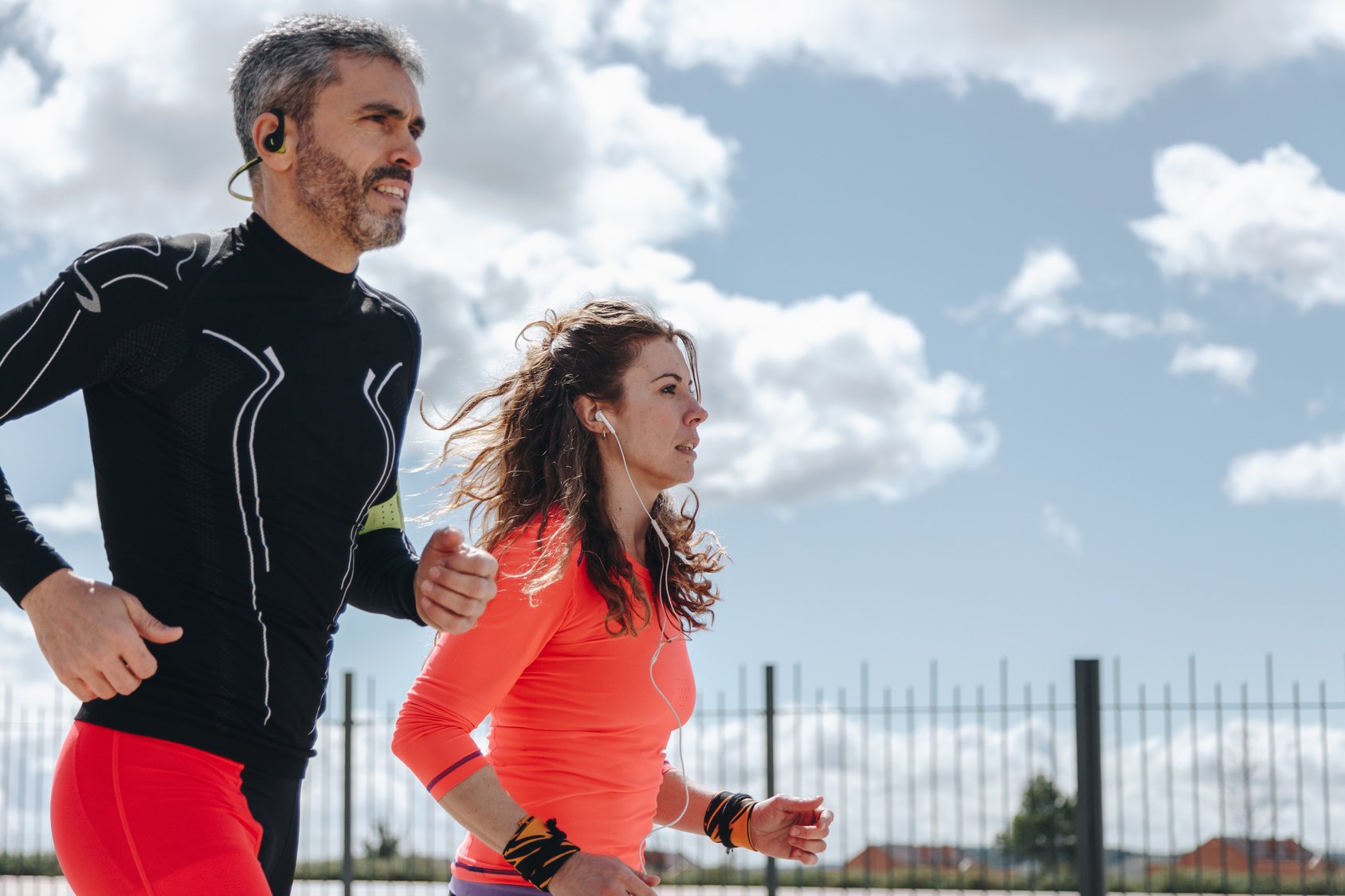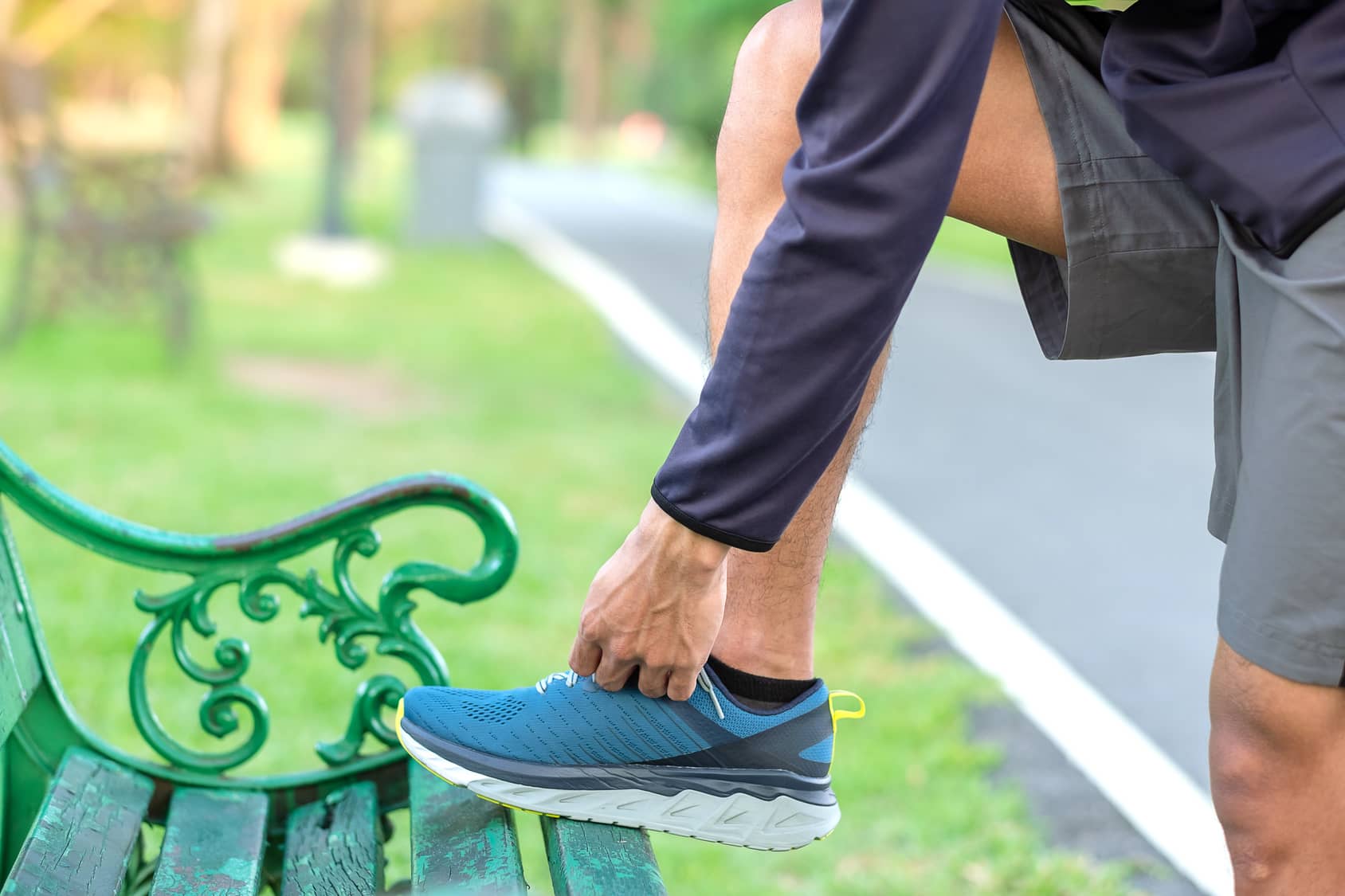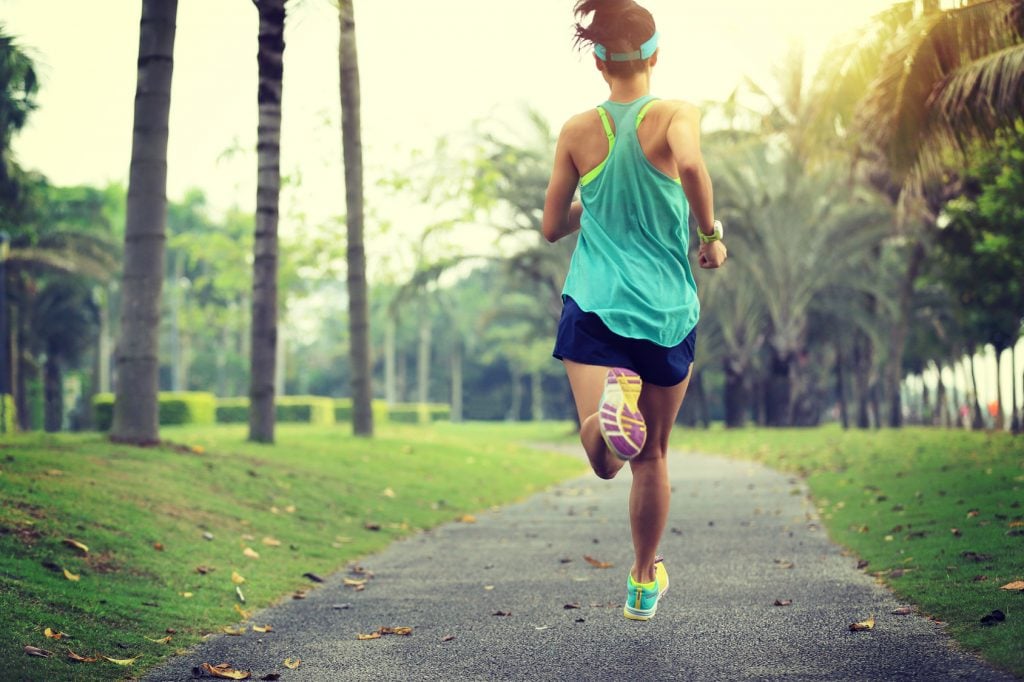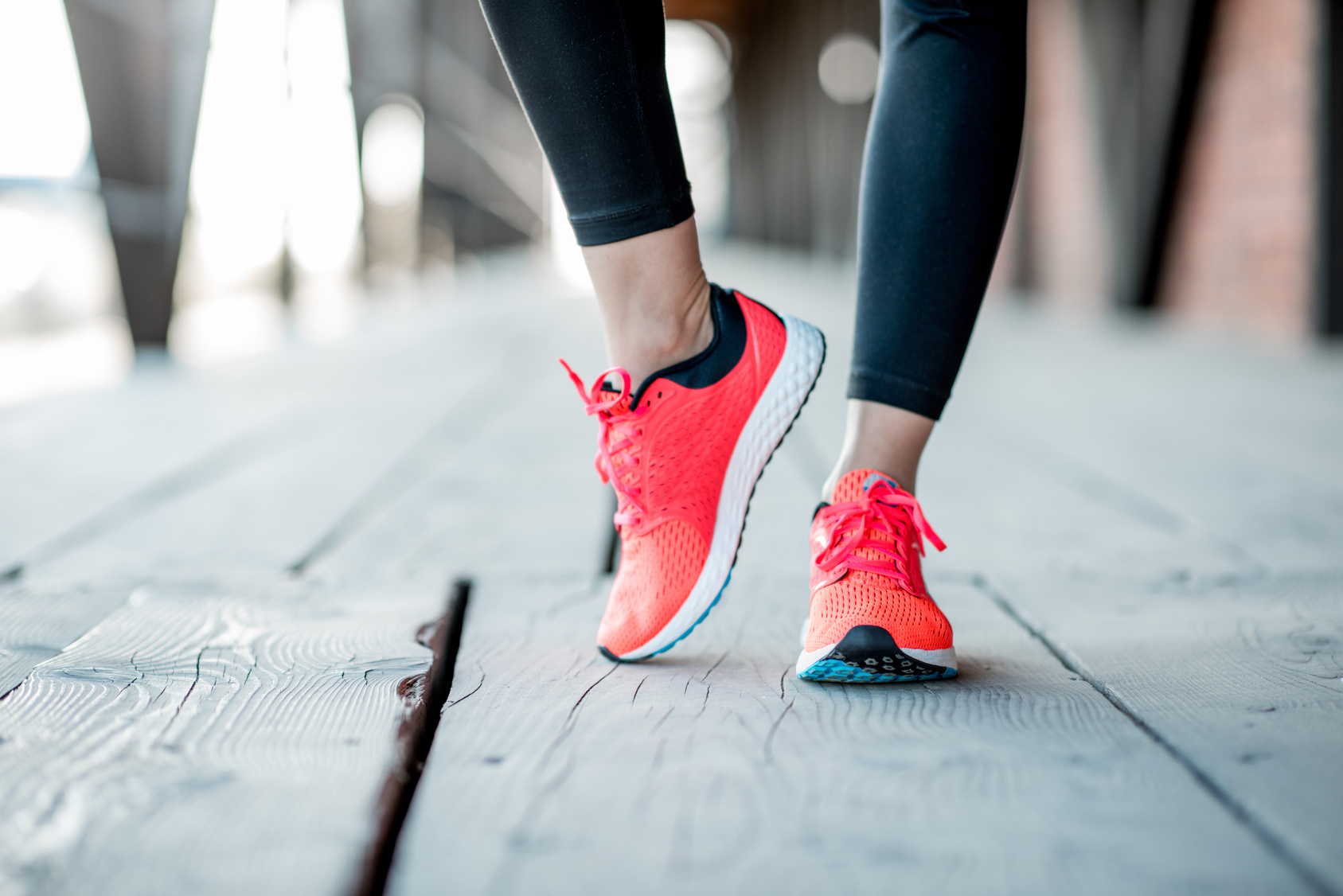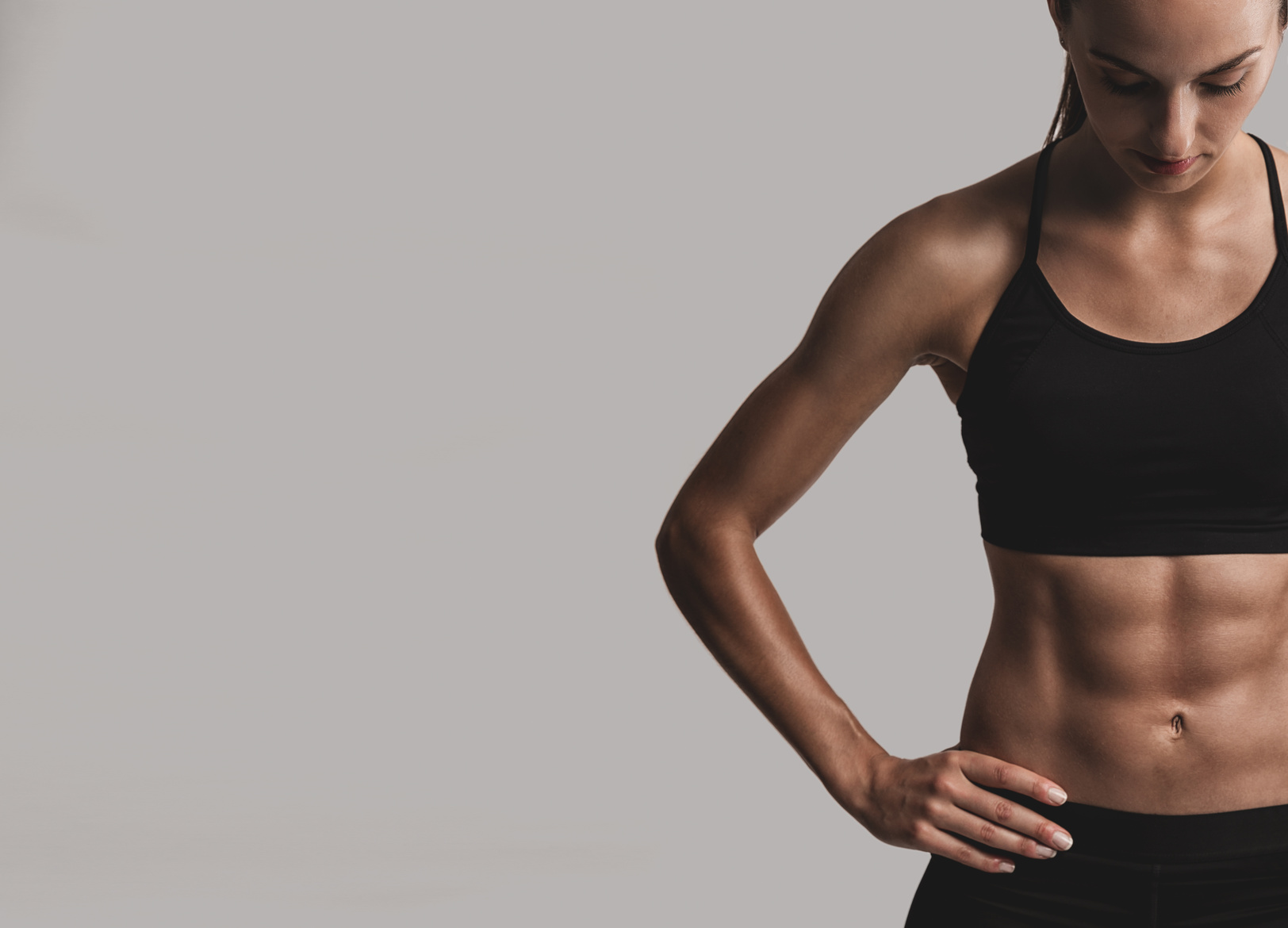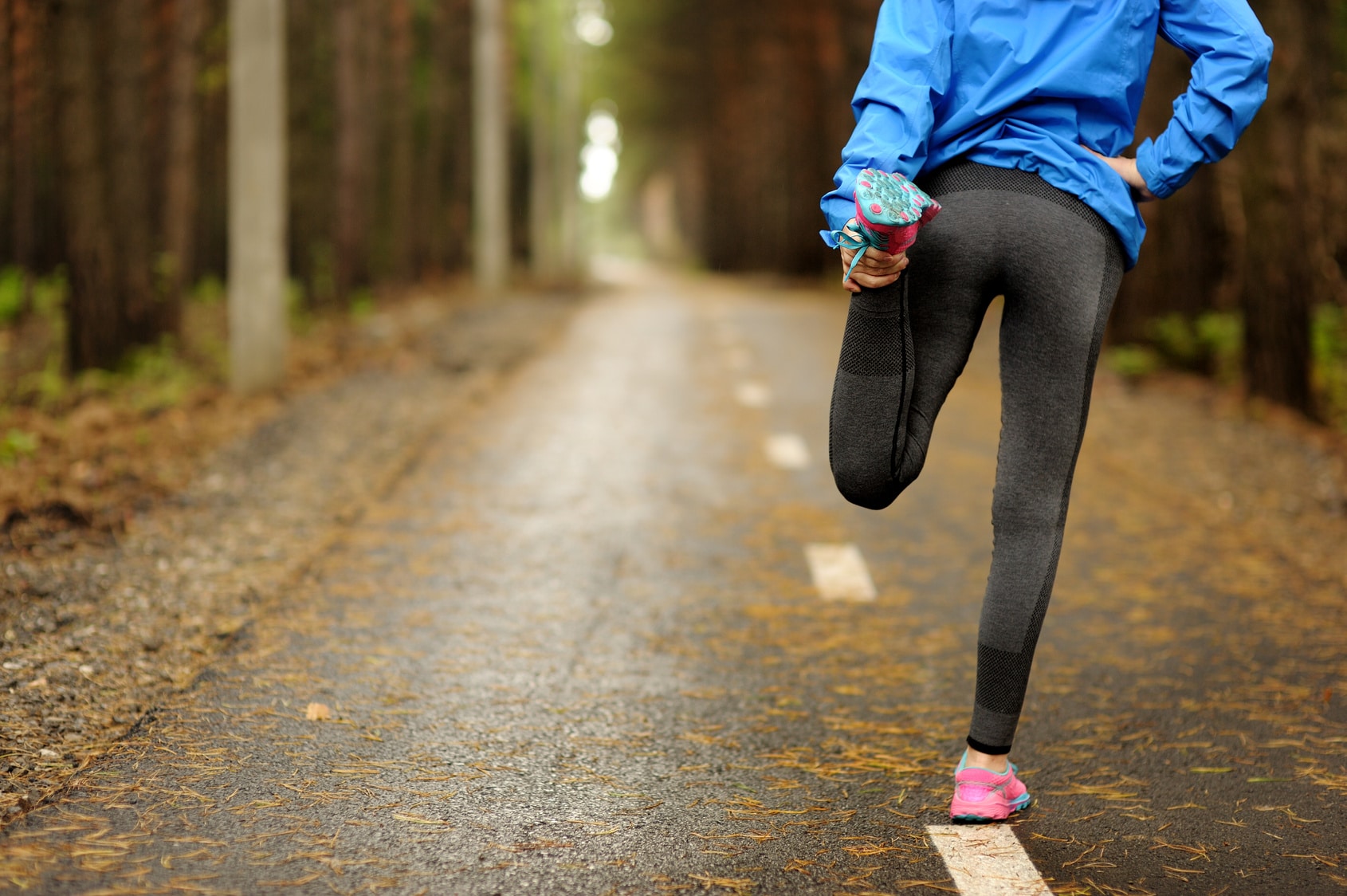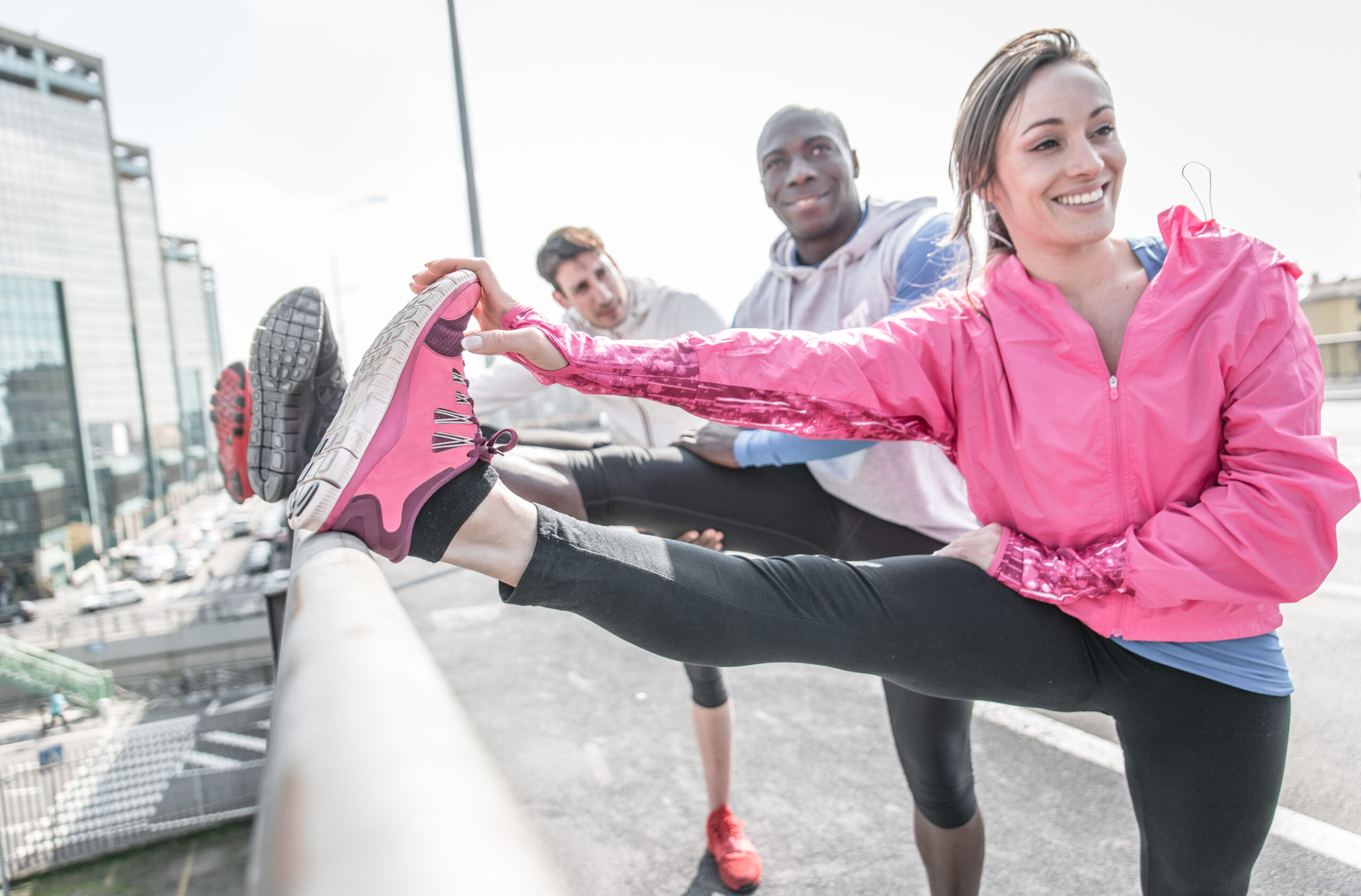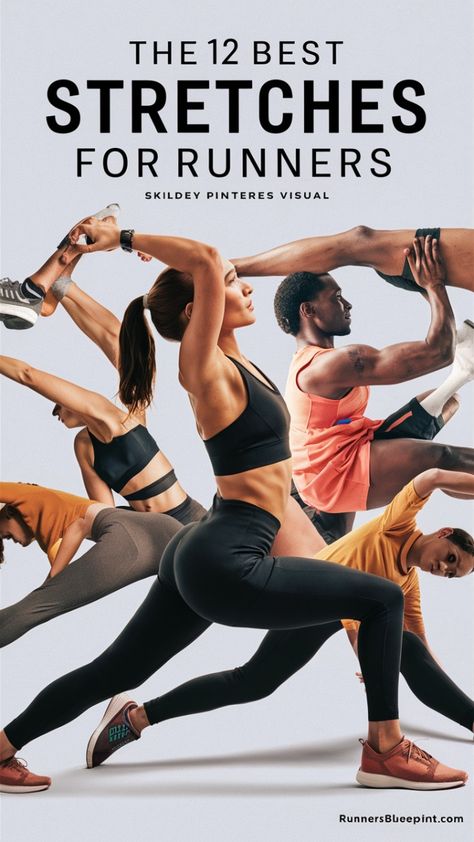Running races come in all sizes and shapes, suiting everyone from the complete beginner to the elite athlete.
That’s why to make the most out of your racing experience, you need to choose the right event then train for it properly. Or else, you’ll crash and burn, and you don’t want that.
So how far are the most common running races, and how do you actually approach training? If you’re looking for answers, then you have come to the right place.
In this article, I’ll break down the distances of the most common running races, including the 5K, 100-miler, and everything in between.
I know it’s a to cover, so let’s dig in.
Note – Today’s article covers some of the most popular running races, but keep in mind that are hundreds more. There are also other types of running races, such as obstacle races, mud runs, and fun runs.
How Far Are Common Running Race Distances? – The One-Mile
This is not a common running race among recreational runners, but for anyone who wants to take up running, the One-Mile run is the perfect starting point—especially if you want to establish a baseline from the get-go.
Roughly 1,600 meters, or the equivalent of four laps around a standard track, the mile is the only imperial distance that survived the sport’s transition to the metric system.
The race requires the endurance of a distance runner coupled with the speed of a sprinter—an elusive balance that only a few can master.
The race is also challenging enough that it takes serious training, but short enough that virtually anyone in decent shape feels like they can pull it off.
According to the International Association of Athletics Federations, the current world record, as of January 2021, is held by Hicham El Guerrouj, the Legendary Moroccan runner, and stands at 3:43.13.
Additional resource – How to avoid slowing down during a race
How To Train For The Mile
This depends on your starting point.
Training for the perfect mile is tricky. The race is not a sprint, so you need basic endurance as well as enough speed to make it fast to the finish line.
If you’re a complete beginner, start with a walk/run strategy until you can run 20 to 30 minutes at an easy pace. Then you can work on your speed.
Typical one-mile training programs require an equal balance of speed, strength, and endurance.
Even if you think that you already fast, but lack the strength and endurance to hold that speed for the distance, your one-mile performance will be subpar.
Additional resource – Guide to pacing strategies for different races
How Far Is The 5K?
First things first: The “K” in 5K refers to kilometers, so a 5K is 5 kilometers long, the equivalent of a 3.1-mile distance.
To put it in perspective, 3.1 miles equal to running 45 laps around a baseball diamond or about 12.5 laps around a standard track.
Still have no idea how far is a 5K? try using a service, like Google Maps or MapMyRun, to map out the distance from your home to a specific destination.
In the recreational running world, the 5K is often hailed as the best “entry-level” event for beginners, and for good reasons. Completing a 5K race requires time, practice, and training, but even the complete beginner with no experience can be race-ready in less than eight weeks (try my couch to 5K plan on the treadmill).
The race is also one of the most popular races in the world, accounting for roughly half of the paid registrant in the US alone. In fact, there were about 8 million finishers of 5K races in the United States in 2016.
A beginner runner? Try this couch to 5K plan.
How Long Will It Take To run A 5K Distance?
I don’t have the exact answer as finish times vary from one runner to the other (learn more about the factors that affect 5K pace here).
The current 5K world record is at 12:35.36 and held by Joshua Cheptegei. But as a beginner, expect to finish the race within the 30 to 40 minutes range—longer if you’re walking/running.
Here are more pace ideas:
- Running 5K at 5-minute mile pace: 15 minutes 32 seconds.
- Running 5K at 6-minute mile pace: 18 minutes 38 seconds.
- Running 5K at 7-minute mile pace: 21 minutes 44 seconds.
- Running 5K at 8-minute mile pace: 24 minutes 50 seconds.
- Running 5K at 9-minute mile pace: 27 minutes 56 seconds.
- Running 5K at 10-minute mile pace: 31 minutes 04 seconds.
- Running 5K at 11-minute mile pace: 34 minutes 10 seconds.
- Running 5K at 12-minute mile pace: 37 minutes 17 seconds.
How To Train For A 5K
5Ks are a challenge, but an achievable one.
As I stated earlier, it’s a distance every one—even those with no running experience and/or are completely out of shape—can train for and within a relatively short period of time, be able to cross the finish line.
But you shouldn’t underestimate it. Try running a 5K without the proper base, and you’ll crash and burn.
Here’s how to approach 5K training as a beginner:
If you’re a complete beginner or haven’t logged any miles in a while—due to illness, injury, or just lack of motivation—start with the walk/run training plan.
For example, running for three minutes, walking for two, then repeating the cycle for 20 to 30 minutes. This can be far less scary than trying to run the whole 3.1 miles without stopping.
I’d recommend training for 10 to 12 weeks leading up to your race day, spending the first four weeks switching between running and walking until you can run 25- to 30-minute straight at an easy pace.
Before you move onto the 10K, maybe check out this 8K distance guide.
How Long is The 10K Race?
The 10K is about 6.21 miles. Completing a 10K is almost the same as running the length of 91 football fields, including both end zones. It’s also roughly 25 laps around a standard track.
This 10K is long enough to allow the beginner—or recreational—runner to stretch their comfort zone, but without overdoing it.
It’s also the ideal stepping stone distance from the 5K to longer distances such as the half marathon or marathon.
How Long Will It Take To run A 10K Distance?
Again, pace depends on your fitness level, age, etc. As a beginner, expect to complete a 10K within 60 to 80 minutes—even longer if you’re run-walking—the world’s record is 26:11.00 and is held by Ugandan Joshua Cheptegei.
Here are more pace examples.
- Running 10K at 5-minute mile pace: 31 minutes 04 seconds.
- Running 10K at 6-minute mile pace: 37 minutes 17 seconds.
- Running 10K at 7-minute mile pace: 43 minutes 30 seconds.
- Running 10K at 8-minute mile pace: 49 minutes 42 seconds.
- Running 10K at 9-minute mile pace: 55 minutes 54 seconds.
- Running 10K at 10-minute mile pace: 62 minutes 8 seconds.
- Running 10K at 11-minute mile pace: 68 minutes 21 seconds.
- Running 10K at 12-minute mile pace: 74 minutes 34 seconds.
How To Train For 10K
Most experts recommend start training for a 10K after doing a few 5Ks, but that doesn’t bar the complete beginner from training for the distance too.
In fact, if you just took up running and want to push yourself, the 6.2 miles is a fantastic goal to aim for. It’ll give your training structure and help improve your discipline and motivation.
This is, of course, as long you’re realistic, give yourself plenty of time to train, and stay within your skill level the entire time.
As a guideline, approach training for the 10K the same way you do a 5K—in a slow and gradual manner. The main difference is that instead of training at a 5K pace, your main workouts will be at the goal 10K pace.
What’s more?
Shoot for a realistic pace and finish time, and stick to that. As a beginner, make it a goal to cross the finish line unscathed. In future 10K races, you can get a bit cockier and try to beat your personal best for the event.
Additional Reading – Here’s your guide to obstacle race course training.
How Far Is The Half Marathon Race?
Also known as a “Pikermi,”(name of a village in Greece used because of the route of the original marathon), the half marathon is 13.1 miles long, or about 21.1 kilometers.
To put it in perspective, running a half marathon is the equivalent of doing 53 laps around a standard outdoor track.
The half marathon distance is widely accepted as the sweet spot of distance running.
The event requires serious training and endurance, but not closely as much as a full marathon. It’s also the threshold at which most runners start to consider themselves as serious athletes.
The half marathon has gathered some tremendous clout over the past few years. There were over two million finishers in 2016, according to Running USA, up from around 400,000 just a couple of decades ago.
How Long It Will Take You To Run A Half Marathon?
Half marathon finish times vary widely. As a beginner, expect to finish the race within two to three hours. The official IAAF world record stands at 57:32 and is set by Kibiwott Kandie of Kenya.
Here are more pace examples:
- Running a half-marathon at 5-minute mile pace: 1 hour, 5 minutes, 33 seconds.
- Running a half-marathon at 6-minute mile pace: 1 hour, 18 minutes, 39 seconds.
- Running a half-marathon at 7-minute mile pace: 1 hour, 31 minutes, 45 seconds.
- Running a half-marathon at 8-minute mile pace: 1 hour, 44 minutes, 51 seconds.
- Running a half-marathon at 9-minute mile pace: 1 hour, 57 minutes, 59 seconds.
- Running a half-marathon at 10-minute mile pace: 2 hours, 11 minutes, 05 seconds.
- Running a half-marathon at 11-minute mile pace: 2 hours, 24 minutes, 12 seconds.
- Running a half-marathon at 12-minute mile pace: 2 hours, 37 minutes, 18 seconds.
How To Train For A Half Marathon
Now that distance has greatly increased, it’s time to take things more seriously.
Once you start making the switch to half marathon training, you’ll have to run at least four times a week to ensure you can finish the race distance unscathed.
If you only run a few times week—covering 6 or 7 on your longest run—you won’t have the needed endurance to take on the 13.1-mile distance. This means one thing and one thing only—failure.
As a rule, take your time, often months, building up a base of running fitness. Plan out a structured running program, ideally for 12 to 16 weeks, then stick to it.
What’s more?
Do plenty of long runs—the bread and butter of long-distance running. These help improve your endurance while getting your body used to spending a long time on the go.
Each week, preferably on a Sunday, do a long run, gradually increasing distance by roughly 10 percent each week until you get to 10 to 12 miles a session.
How Far is The Marathon Race?
The marathon is the granddaddy of races and a bucket-list event for many runners.
A marathon is 26.2 miles or 42 kilometers. That’s stands to running roughly 105 times around a standard outdoor track.
Even though marathon events tend to differ in their terrain and level of challenge, the length is always 26.2 miles.
This distance was inspired by the Philippides who run from the Marathon To Athens to deliver the news of victory over the Persians by the greens.
Then, soon after announcing the victory, the Greek herald collapsed on the floor and died of exhaustion.
How Long It Will Take You To Run A Marathon?
The longer the distance, the steeper the disparity between finish times. Though the current world record of the marathon is about two hours, beginner runners may cover the whole 26.2 miles distance in five hours or more.
Here are a few marathon pace examples:
- Running a Marathon at 5-minute mile pace: 2 hours, 11 minutes, 05 seconds.
- Running a Marathon at 6-minute mile pace: 2 hours, 37 minutes, 17 seconds.
- Running a Marathon at 7-minute mile pace: 3 hours, 03 minutes, 39 seconds.
- Running a Marathon at 8-minute mile pace: 3 hours, 29 minutes, 41 seconds.
- Running a Marathon at 9-minute mile pace: 3 hours, 55 minutes, 33 seconds.
- Running a Marathon at 10-minute mile pace: 4 hours, 22 minutes, 11 seconds.
- Running a Marathon at 11-minute mile pace: 4 hours, 48 minutes, 25 seconds.
- Running a Marathon at 12-minute mile pace: 5 hours, 14 minutes, 38 seconds.
How To Train For A Marathon
Completing a marathon requires a lot of conditioning, focused training, and mental strength. Sorry, there are no shortcuts.
Try to wing it without proper training, and you’ll have the worst running experience of your life.
Most runners who drop out of or crash and burn during the erase are typically under-prepared—don’t fall into that trap.
Start training after running more than a few 5Ks, 10Ks, and Half marathons, then devote three to four months to marathon training.
During your plan, aim to drastically build up your mileage base and get in a few long runs—in the 15 to 18 miles range—under your belt before the big day.
During the race, get ready to hit “The Wall,” which typically strikes the 21-mile (33K) mark, especially during your first marathon experience.
How Long is The 50-Miler Race?
Often dubbed as the half marathon of ultramarathon distances, the 50-miler, or 80 kilometers, is a beast of a race in itself. Logging in 50 miles equals running 16 5K races back to back. Yes, that’s quite a lot!
The 50-miler is the perfect stepping stone to the world of ultramarathons—the ideal event for hardcore runners or trail addicts on the quest for the next endorphin high.
How Long It Will Take You To Complete 50-Mile Race?
The current world record is a staggering 4:50:08 and is set by Jim Walmsley at the 2019 Hoka One Project Carbon X event. But that’s a finish time even the most hardcore runners can only dream of achieving.
As a beginner, expect to finish your first event between eight and 14 hours.
Here are a few pace examples:
- Running a 50-miler at 6-minute mile pace: 5 hours.
- Running a 50-miler at 7-minute mile pace: 5 hours, 50 minutes.
- Running a 50-miler at 8-minute mile pace: 6 hours, 40 minutes.
- Running a 50-miler at 9-minute mile pace: 7 hours, 30 minutes.
- Running a 50-miler at 10-minute mile pace: 8 hours, 20 minutes.
- Running a 50-miler at 11-minute mile pace: 9 hours, 10 minutes.
- Running a 50-miler at 12-minute mile pace: 10 hours.
- Running a 50-miler at 13-minute mile pace: 10 hours, 50 minutes.
How Train For a 50-Miler
Training for a 50-miler is no easy walk in the park. You’ll need to devote years of rigorous training to be able to make it in the world of ultra-running.
During the event, expect the worst to happen: fatigue, injury, gear issues, stomach problems, mental break down, crying—you name it.
As a rule, spend a few years honing your running game and doing plenty of races before you decide to try a 50-miler.
At a minimum, shoot for upwards of 50 miles a week while remaining injury-free before you start tackling the 50-mile distance.
Here are some of the best sources on 50-miler training
How Far is The 100-Miler Race?
As the world of ultra-running expands in popularity, the 100-mile distance is regarded as the ultimate benchmark—the big daddy of all ultramarathons.
The 100-miler, the equivalent of 160 kilometers. It requires running 363 laps around a standard track to cover 100 miles. The distance is also the equivalent of running four marathons back to back.
Think one marathon is challenging enough? Try completing four in a row.
That’s why covering the whole distance involves running continuously for 24 to 42 hours.
Running a 100-miler is not completely out of reach for the ordinary runner. In fact, with the right long-term plan, strategic build-up, and an iron will, you can run a 100-mile –even if you are not endowed with the best athletic genes in the world.
How Long It Will Take You To Run 100 Miles?
The world record for the distance is at 11 hours and 19 minutes and was set by Zach Bitter, running a pace of 6 minutes and 48 seconds per mile. Yes, can you imagine running that fast for such a long time?
All in all, how long will take you to run 100 miles will depend on tough the course is. If the course is totally flat, expect to finish it within 18 to 22 hours. But a tough race, such as the Mogollon Monster 100, can take you up 30 hours or longer.
Here are a few pace ideas to give you an example:
- Running a 100-miler at 6-minute mile pace: 10 hours.
- Running a 100-miler at 7-minute mile pace: 11 hours, 40 minutes.
- Running a 100-miler at 8-minute mile pace: 13 hours, 20 minutes.
- Running a 100-miler at 9-minute mile pace: 15 hours.
- Running a 100-miler at 10-minute mile pace: 16 hours, 40 minutes.
- Running a 100-miler at 11-minute mile pace: 18 hours, 20 minutes.
- Running a 100-miler at 12-minute mile pace: 20 hours.
- Running a 100-miler at 13-minute mile pace: 21 hours, 20 minutes.
How To Train For a 100-Miler
Google “how to run 100 miles,” and you’ll definitely find a lot of helpful, practical advice written by professional athletes and coaches.
I’m not a professional runner nor an Olympic-level, high-endurance coach.
But, according to my research and intuition, training for the 100-miler is the hardest thing you can do as a runner.
And the most of the training boils down to your mental game—as in how mentally you prepared. In fact, the difference between training for a 100-miler, and let’s say, a marathon is almost entirely mental.
As you can tell by now, the longer the race, the more miles you need to log in every week—not to mention the cross-training and mobility work required to keep your body healthy and performing well throughout your training.
During the race, you’ll have to deal with more than just running—sleep deprivation is one example.
It’s not just about training your body for the distance—your whole existence should be ready too.
Here are a few resources to help you get started:
- Case Study – Training For a 100-Miler
- How To Train for a 100-Miler
- Here’s how to avoid a DNF in a race
- Age grading explained
- How far is an 8K race
- How to warm up for a race
- Your guide to the 100K race
How Far Are Common Running Race Distances? – The Conclusion
There you have it! In this article, I’ve explained in detail the official running distances of some of the most common and sought after races in the running world. The training tips should also set you on the right path. The rest is just details.
Please feel free to leave your comments and questions in the section below.
In the meantime, thank you for dropping by.
Keep training strong.

